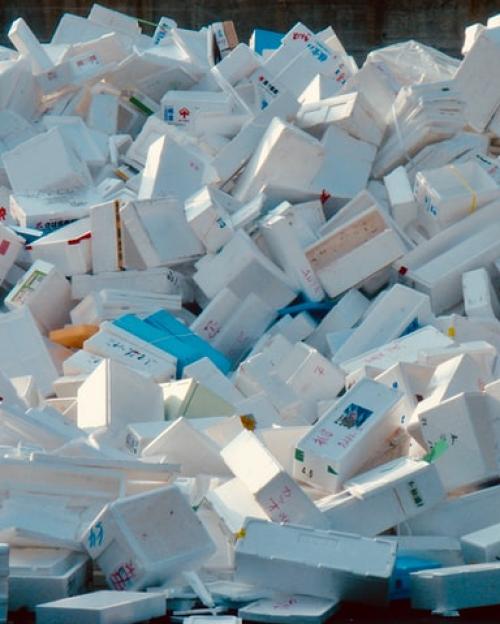Styrofoam egg cartons, hard plastic compact disc cases, red drinking cups and many other common products are composed of polystyrene, a type of plastic that makes up a third of landfill waste worldwide.
“In terms of plastic production and end-of-life waste streams, we are on the road to an unsustainable future,” said Erin Stache, assistant professor of chemistry and chemical biology in the College of Arts and Sciences.
But there’s good news: Stache has discovered a new path for polystyrene waste that includes being upcycled into benzoic acid, a chemical with wide commercial demand, through a mild process that uses light, an oxygen-rich environment and an abundant iron-based catalyst. The reaction can even take place in a sunny window.
The paper, “Chemical Upcycling of Commercial Polystyrene via Catalyst-Controlled Photooxidation” published March 23 in the Journal of the American Chemical Society. Doctoral candidate Sewon Oh is the lead author.
In line with her lab’s mission to tackle environmental concerns through interesting chemistry, the new process is mild, climate-friendly and scalable to commercial waste streams, Stache said. It efficiently produces benzoic acid, a product stocked in undergraduate and high school chemistry labs and also used in fragrances, food preservatives, and other ubiquitous products.
Moreover, the process is tolerant of additives inherent in a flow of consumer waste, including dirt, dyes and other types of plastics.
Polystyrene (PS) plastics vary widely in form, use and texture – from light, airy Styrofoam to hard CD cases, and many forms in between. All these products are similar in chemical composition, Stache said.
“The difference is in how they are processed,” she said. “Polystyrene foam, or Styrofoam, is filled with air, like a meringue, whereas a hard plastic CD case is solid polystyrene.”
At the molecular level, polymers (plastics) are composed of hundreds of small molecules called monomers assembled into long molecular chains through complicated processes, Stache said. Breaking down a polymer can be similarly intricate.
The researchers found that optimized conditions require a PS sample in acetone exposed to LED light in an oxygen-rich environment, using an iron chloride catalyst for 20 hours. In the optimized process, PS broke down to 23% benzoic acid. Other products included smaller plastic molecules that can be repurposed in other ways.
Last summer, Stache’s lab ran some degradation experiments in a sunny window; in a place with strong year-round sunlight, the reaction could be done outdoors.
“The advantage of using light is you can get exquisite control over the chemical process based on some of the catalysts we’ve developed to harness the white light. If we can use sunlight to drive the process, that’s a win-win,” Stache said, noting that many existing polymer recycling require heating a polymer for melting and processing, which usually requires fossil fuel.
To test the tolerance of the process to other materials mixed with the PS plastic, the researchers used several products, ranging from packaging materials to coffee cup lids.
They found that three items – a white coffee cup lid, Styrofoam and a clear lid – degraded efficiently. A black coffee cup lid degraded less efficiently, possibly because the black dyes inhibit light penetration, Stache said.
“These results signify that our system could efficiently break down commercial samples of PS, even with additional composite and insoluble material,” she said.
To demonstrate scalability and potential commercial application, the researchers created a setup with two syringe pumps and two LED lamps in a 3D-printed photoreactor. The efficiency of the breakdown process at the large scale was similar to that in small batches.
“If we can make the process even more efficient, we can think about how to commercialize it and use it to address waste streams,” Stache said.
This research was supported in part by the National Science Foundation.




